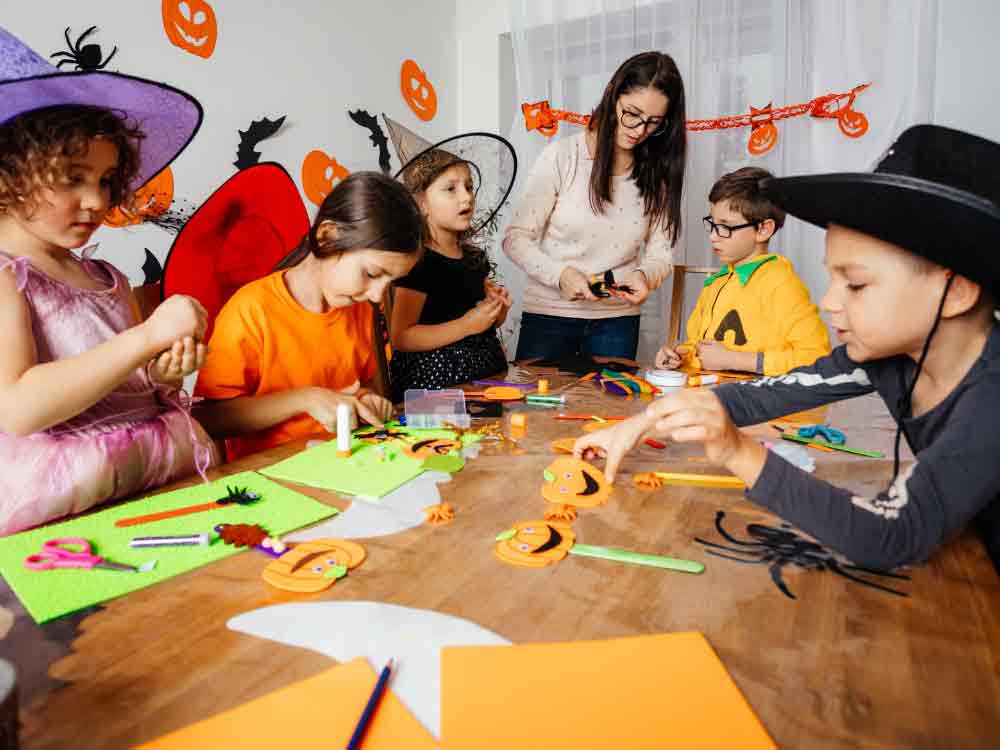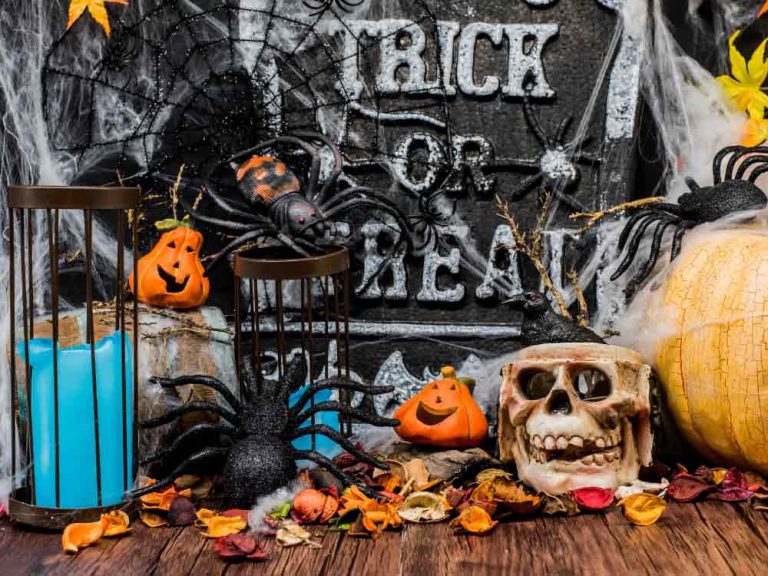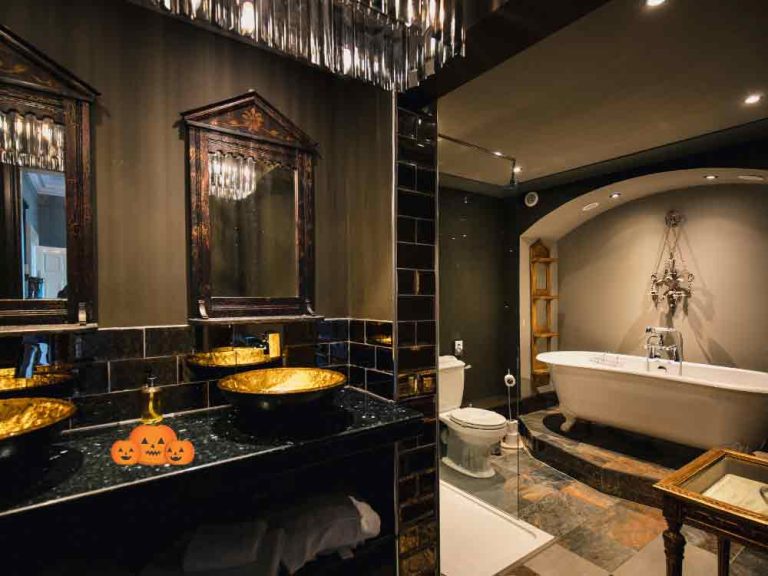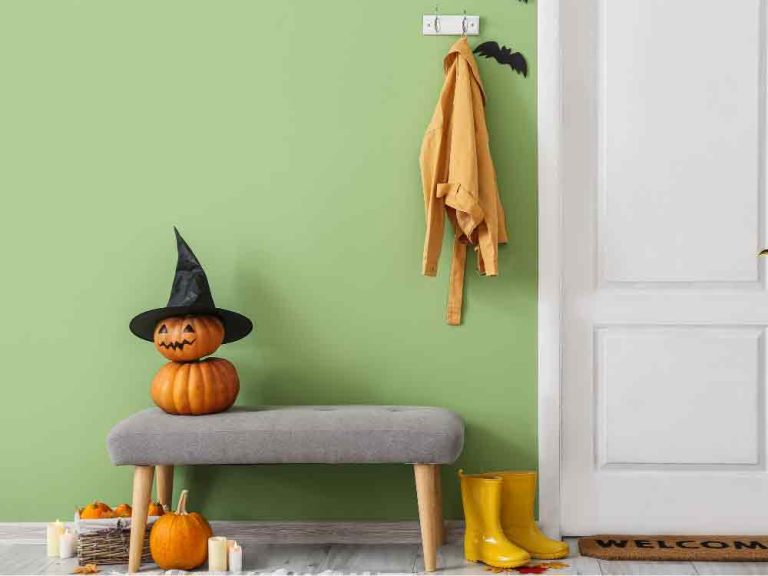30 Creative Halloween Decor Ideas for Your Classroom: Transform Your Learning Space into a Spooky Wonderland

Halloween is a magical time of year that brings excitement and creativity to the classroom. Decorating your classroom for Halloween is more than just hanging up a few paper bats; it’s an opportunity to create an engaging learning environment that sparks imagination, encourages participation, and makes learning fun.
Thoughtful classroom decoration plays an important role in creating a positive atmosphere where students feel excited to learn and explore. The right Halloween decorations can transform an ordinary classroom into an extraordinary space that celebrates the season while maintaining an educational focus.
This article explores many unique Halloween decoration ideas for your classroom, showing how different themes can match various teaching styles and age groups. From friendly ghosts to educational pumpkin displays, each idea has its own special character while keeping the classroom welcoming and appropriate for young learners.
Join us as we discover 30 amazing Halloween classroom decoration concepts, each offering practical tips and simple instructions for creating your own festive learning environment.
1. Friendly Ghost Reading Corner with White Sheet Decorations
Imagine creating a cozy reading corner where friendly white sheet ghosts hang from the ceiling with smiling faces. Soft cushions in orange and black are arranged on the floor, inviting students to sit and read their favorite spooky stories.
A small bookshelf nearby holds Halloween-themed books, while paper bats made by students decorate the walls around the reading area. String lights with small pumpkin covers provide warm, gentle lighting that makes the space feel magical and welcoming.
This reading corner creates a special place where students can enjoy books in a fun Halloween atmosphere. The friendly ghost decorations are not scary, making them perfect for younger students who might be sensitive to frightening images.
Tips for Creating This Look:
- Use white sheets to make simple ghost decorations with happy faces.
- Add soft cushions in Halloween colors for comfortable seating.
- Display Halloween books at student eye level for easy access.
- Use battery-operated string lights for safe, warm lighting.
2. Pumpkin Patch Learning Center with Real Mini Pumpkins
This creative learning center features small real pumpkins arranged on a table covered with brown paper that looks like soil. Each pumpkin has a number or letter written on it, turning the decoration into a hands-on learning tool.
Students can use the pumpkins for counting practice, spelling activities, or sorting games. Hay bales made from yellow paper create a farmyard feel, while construction paper vines and leaves add natural touches to the display.
The pumpkin patch learning center combines decoration with education, making it a practical choice for teachers who want their Halloween decorations to support classroom learning goals.
Tips for Creating This Look:
- Choose small pumpkins that students can easily handle and move.
- Write educational content on pumpkins with washable markers.
- Create paper hay bales for authentic farmyard atmosphere.
- Add green paper vines to connect the pumpkins together.
3. Spider Web Science Corner with Cotton Web Decorations
A science corner transforms into a spider web wonderland with cotton stretched across the ceiling and walls to create realistic spider webs. Plastic spiders of different sizes sit in the webs, providing opportunities to discuss spider facts and biology.
Information cards about real spiders hang near the web decorations, teaching students about these helpful creatures. Black construction paper spiders made by students add personal touches to the display, showing different spider species they have learned about.
This decoration idea turns Halloween imagery into a science lesson, helping students understand that spiders are important parts of nature rather than things to fear.
Tips for Creating This Look:
- Stretch cotton or white yarn to create web patterns.
- Add educational fact cards about real spider species.
- Include student-made spiders to encourage participation.
- Display books about spiders and insects for further learning.
4. Bat Cave Mathematics Station with Number Activities
This mathematics station features a cave made from black paper on the wall, with paper bats flying out carrying math problems. Each bat has a number or simple equation that students must solve, making practice fun and seasonal.
Orange and purple number lines decorate the cave edges, while bat-shaped flashcards provide additional practice opportunities. Student work can be displayed as “bat certificates” showing completed math challenges.
The bat cave mathematics station proves that learning activities can be both educational and festive, keeping students engaged with seasonal themes while building important skills.
Tips for Creating This Look:
- Create a large cave entrance using black bulletin board paper.
- Make bat shapes that hold math problems or vocabulary words.
- Use bright colors for numbers to make them easy to read.
- Change the problems weekly to maintain student interest.
5. Harvest Festival Door Display with Autumn Colors
Transform your classroom door into a harvest festival scene with fall leaves in red, orange, and yellow covering the background. A scarecrow made from construction paper stands in the center, welcoming students with a friendly smile.
Pumpkins, corn stalks, and apple decorations frame the door, while a “Welcome to Our Harvest Classroom” banner adds a warm greeting. This decoration celebrates the autumn season while keeping the Halloween theme gentle and appropriate for all students.
The harvest festival theme works especially well for classrooms with young children or families who prefer non-scary Halloween alternatives.
Tips for Creating This Look:
- Use fall leaf cutouts in various warm colors.
- Create a friendly scarecrow with a welcoming expression.
- Add real or paper corn stalks for authentic autumn feeling.
- Include a welcoming message that makes students feel happy.
6. Skeleton Anatomy Lesson Display with Educational Labels
This creative display features a life-size paper skeleton on the wall with labels pointing to different bones. The skeleton becomes a teaching tool during October, helping students learn bone names and body systems in a fun, seasonal way.
Colorful labels identify major bones, while fact cards share interesting information about the human skeleton. Students can create their own small skeleton diagrams to display nearby, showing what they have learned.
This decoration turns a common Halloween symbol into a valuable science lesson, demonstrating how seasonal decorations can support curriculum goals.
Tips for Creating This Look:
- Print or draw a skeleton with clear, visible bones.
- Add colorful labels that are easy to read from a distance.
- Include fun facts about bones and the skeletal system.
- Let students create their own labeled skeleton drawings.
7. Witch’s Potion Lab for Science Experiments
Create an exciting science area styled as a witch’s potion laboratory, with colorful liquids in clear containers labeled as “magic potions.” These are actually safe science experiments like colored water, oil and water mixtures, or baking soda volcanoes.
A pretend cauldron (a black pot) sits at the center, surrounded by plastic bottles with handmade labels like “Dragon Tears” or “Unicorn Sparkles.” Recipe cards explain the science behind each “potion,” connecting imagination with real learning.
This decoration area encourages scientific thinking while embracing Halloween creativity, showing students that science can be magical and fun.
Tips for Creating This Look:
- Use clear bottles and jars for colorful water experiments.
- Create fun, imaginative labels for each science demonstration.
- Write simple explanations of the science behind each activity.
- Ensure all materials are completely safe for student age groups.
8. Friendly Monster Word Wall with Vocabulary Practice
A word wall gets a Halloween makeover with colorful monster characters holding vocabulary words. Each monster has a different color and personality, with googly eyes and fuzzy hair that makes learning new words exciting and memorable.
Students can match words to definitions by connecting monsters with string or ribbon. New vocabulary words appear each week, with monsters “eating” words that students have mastered by moving them to a completed section.
This decoration makes vocabulary practice playful and engaging, helping students remember new words through visual and tactile learning methods.
Tips for Creating This Look:
- Create monster characters in bright, non-scary colors.
- Write vocabulary words clearly on monster bodies or signs they hold.
- Use different monster designs for different word categories.
- Let students help create new monsters for new vocabulary units.
9. Haunted Library with Mysterious Book Display
Transform your classroom library into a mysterious haunted collection with draped fabric creating cozy nooks between bookshelves. Purple and black fabric adds drama without being frightening, while battery-operated candles provide atmospheric lighting.
Book covers face outward, showing Halloween and fall-themed stories. A “Keeper of Books” owl decoration sits on top of the shelves, and handmade bookmarks shaped like bats or pumpkins encourage reading participation.
This library decoration makes reading feel special and exciting, encouraging students to explore books while enjoying the seasonal atmosphere.
Tips for Creating This Look:
- Drape dark fabric to create mysterious reading spaces.
- Display Halloween books with covers showing for easy selection.
- Add battery-operated candles for safe atmospheric lighting.
- Create themed bookmarks as rewards for reading goals.
10. Pumpkin Growth Chart with Student Height Tracking
A wall display features pumpkins of increasing sizes arranged from floor to ceiling, creating a growth chart where students can track their height throughout October. Each pumpkin has measurements marked clearly, with student names on paper leaves showing their current height.
This decoration combines a seasonal theme with a practical classroom tool, letting students see how they grow while engaging with mathematical measurement concepts. Photos from previous months can show growth over time.
The pumpkin growth chart makes measurement personal and fun, turning a routine activity into an exciting Halloween tradition.
Tips for Creating This Look:
- Create pumpkins in graduated sizes from small to large.
- Mark clear measurement lines on or near each pumpkin.
- Add student names on leaf shapes at their current height.
- Take photos monthly to document growth throughout the year.
11. Black Cat Math Corner with Counting Activities
This mathematics area features friendly black cat decorations with bright orange eyes and happy expressions. Each cat holds a number, and students can arrange them in order, create simple addition problems, or sort them by various attributes.
Orange paw prints on the floor lead to the math center, creating a path that guides students to the learning area. Cat-shaped counters and manipulatives make hands-on math practice more engaging and seasonally appropriate.
The black cat theme brings Halloween spirit to mathematics while keeping the atmosphere playful and educational rather than spooky or scary.
Tips for Creating This Look:
- Create black cat characters with friendly, non-scary faces.
- Use cats to display numbers for counting and ordering activities.
- Make paw print trails using orange construction paper.
- Provide cat-shaped manipulatives for hands-on practice.
12. Candy Corn Bulletin Board with Student Work Display
A large bulletin board decorated with layers of orange, yellow, and white paper creates a giant candy corn background. Student work papers are displayed in rows that follow the candy corn color pattern, making the display both organized and festive.
A border of individual candy corn shapes frames the board, with student names written on each piece. The title “Sweet Work from Our Class” connects the Halloween candy theme with positive recognition of student efforts.
This bulletin board design celebrates student achievement while maintaining a fun, seasonal appearance that brightens the classroom environment.
Tips for Creating This Look:
- Layer orange, yellow, and white paper in candy corn pattern.
- Arrange student work to follow the color stripe design.
- Add individual candy corn pieces with student names.
- Change displayed work regularly to feature all students.
13. Owl Autumn Wisdom Tree with Learning Goals
A large tree made from brown paper covers part of a wall, with colorful fall leaves and wise owl decorations sitting on the branches. Each owl holds a scroll with a learning goal or positive message for students.
Students can add their own paper leaves to the tree, writing things they want to learn or goals they want to achieve during October. The tree grows fuller as more students contribute, creating a collaborative classroom decoration.
This decoration combines autumn and Halloween themes with goal-setting activities, helping students focus on learning while enjoying seasonal decorations.
Tips for Creating This Look:
- Create a sturdy tree trunk and branches from brown paper.
- Add owl decorations with wise, friendly expressions.
- Provide leaf templates for students to write personal goals.
- Display the tree at student eye level for easy interaction.
14. Frankenstein’s Lab Writing Center with Creative Prompts
Transform a writing center into Frankenstein’s laboratory with green decorations and fun science equipment imagery. Writing prompts displayed on test tube shapes encourage creative storytelling about friendly monsters and scientific discoveries.
Pencils become “lightning bolts of inspiration,” and completed stories are displayed as “successful experiments.” A cardboard control panel with buttons and switches adds interactive elements that make the writing space exciting and engaging.
This themed writing center motivates reluctant writers by making the writing process feel like an adventure rather than a chore.
Tips for Creating This Look:
- Use green decorations and paper to create the laboratory theme.
- Write creative prompts on test tube or beaker shapes.
- Add pretend control panels with buttons and switches.
- Display finished stories as “completed experiments” on the wall.
15. Mummy Math Wrapping Station with Measurement Practice
This hands-on mathematics station features toilet paper rolls that students use to practice measurement concepts by “wrapping” classroom objects like mummies. Measurement cards challenge students to estimate, then measure, how much paper they need to wrap different items.
A poster showing mummy facts from ancient Egypt adds educational content, connecting the Halloween activity with social studies learning. Recording sheets let students document their measurements and compare results with classmates.
The mummy wrapping station turns measurement practice into a memorable, tactile experience that students remember long after Halloween ends.
Tips for Creating This Look:
- Provide toilet paper rolls for safe wrapping activities.
- Create measurement challenge cards with various objects to wrap.
- Add educational content about real mummies and ancient Egypt.
- Include recording sheets for students to document their work.
16. Spooky Shadows Bulletin Board with Silhouette Art
A bulletin board displays black silhouettes of Halloween imagery against orange and purple sunset-colored backgrounds. Students create their own shadow art using black paper, cutting out shapes of trees, houses, cats, and bats.
The display teaches art concepts like positive and negative space, silhouettes, and contrast while creating a dramatic seasonal display. Each student’s name appears near their artwork, making the board a showcase of individual creativity.
This art-focused decoration demonstrates how Halloween themes can support curriculum standards while producing beautiful classroom displays.
Tips for Creating This Look:
- Create sunset backgrounds using orange and purple paper.
- Teach silhouette cutting techniques before the activity.
- Display all student work to celebrate every child’s effort.
- Add a title that explains the art concept being demonstrated.
17. Cauldron Reading Challenge with Book Goal Tracking
A large cauldron cutout on the wall contains paper flames in different colors, each representing books read by the class. When students finish a book, they add a flame to the cauldron, making the “fire” grow bigger and brighter.
A friendly witch character stands beside the cauldron, encouraging reading with speech bubbles that say things like “Keep the Reading Magic Alive!” The challenge creates excitement around reading while using Halloween imagery in a positive way.
This reading incentive decoration motivates students to read more books while building a sense of classroom community through shared goals.
Tips for Creating This Look:
- Create a large black cauldron from construction paper.
- Cut flame shapes in red, orange, and yellow paper.
- Add student names to flames when they complete books.
- Include an encouraging witch character with positive messages.
18. Graveyard Grammar Garden with Parts of Speech
This creative grammar display features tombstone shapes labeled with different parts of speech like nouns, verbs, adjectives, and adverbs. Students place word cards in front of the appropriate tombstone, sorting vocabulary by grammatical function.
A fence made from popsicle sticks surrounds the graveyard, and paper grass adds texture to the display. The graveyard theme makes grammar practice more engaging, turning sentence analysis into a game-like activity.
This decoration proves that even grammar lessons can be fun and seasonal, helping students master important language skills through creative presentation.
Tips for Creating This Look:
- Create tombstone shapes for each part of speech category.
- Provide word cards that students can sort and place.
- Add fence and grass details for realistic graveyard appearance.
- Change vocabulary words weekly to maintain interest.
19. Bat Facts Ceiling Display with Hanging Information
Paper bats hang from the ceiling at various heights, each one displaying an interesting fact about real bats. Students can read the facts by looking up, making the ceiling space educational rather than just decorative.
The hanging bats create movement and visual interest overhead while teaching students about bat biology, habitats, and importance in ecosystems. Some bats include questions that students answer as part of a classroom scavenger hunt.
This ceiling decoration maximizes classroom space while turning overhead areas into learning opportunities that capture student attention and curiosity.
Tips for Creating This Look:
- Hang bats at safe heights that don’t interfere with movement.
- Write clear, interesting facts about real bats on each shape.
- Include some questions to encourage active reading.
- Use fishing line or clear thread for invisible hanging support.
20. Pumpkin Feelings Chart with Emotional Learning
A feelings chart features pumpkin faces showing different emotions, helping students identify and express their feelings throughout the day. Each pumpkin has a clear expression and emotion label like “happy,” “sad,” “excited,” “worried,” or “calm.”
Students move their name tag to the pumpkin that matches their current feeling, creating opportunities for teachers to check in with students and provide support. The chart combines social-emotional learning with seasonal decoration.
This practical decoration supports student wellbeing while maintaining a Halloween theme, demonstrating how seasonal decorations can serve important developmental purposes.
Tips for Creating This Look:
- Create pumpkin faces showing a range of clear emotions.
- Label each emotion with simple, easy-to-read words.
- Provide name tags that students can easily move.
- Check the chart daily and respond to student emotional needs.
21. Witch Hat Shape Sorting Station for Kindergarten
This early learning station features witch hats in different sizes and colors that students sort by various attributes. Sorting mats with circles, categories, or Venn diagrams help students organize the hats according to teacher-selected criteria.
The activity builds mathematical thinking skills while using engaging Halloween materials that capture young learners’ attention. Students can work independently or in small groups, developing both academic and social skills.
The witch hat sorting station shows how simple Halloween materials can support fundamental early childhood learning goals through hands-on manipulation and categorization.
Tips for Creating This Look:
- Create witch hats in various sizes, colors, and patterns.
- Provide clear sorting mats with defined categories.
- Laminate materials for durability and repeated use.
- Change sorting criteria regularly to maintain challenge.
22. Monster Emotions Art Wall with Self-Expression
Students create their own monster characters that express different emotions, displaying them on a wall titled “Our Monster Feelings.” Each monster shows a different emotion through color choices, facial expressions, and body language.
This art project combines creative expression with emotional intelligence, helping students understand that all feelings are acceptable and can be expressed in healthy ways. The display celebrates diversity in both artistic style and emotional experience.
The monster emotions wall creates a safe space for discussing feelings while producing a colorful, engaging Halloween decoration that reflects student personalities.
Tips for Creating This Look:
- Provide various art materials for monster creation.
- Discuss emotions before students begin their artwork.
- Display all student work to validate every expression.
- Use the display as a starting point for feelings discussions.
23. Scarecrow Science of Fall Changes Display
A scarecrow character stands in the center of a bulletin board surrounded by information about autumn changes in nature. Cards explain why leaves change color, why birds migrate, and how animals prepare for winter.
Real or paper leaves in different stages of color change provide visual examples of the science concepts being taught. Students add their own observations about fall changes they notice outside school, contributing to the display.
This decoration connects Halloween imagery with science curriculum, making seasonal changes concrete and observable for young learners.
Tips for Creating This Look:
- Create a central scarecrow figure to anchor the display.
- Add information cards about autumn science concepts.
- Include real leaves when possible for authentic examples.
- Encourage student contributions of fall observations.
24. Ghost Story Sequencing Activity with Beginning, Middle, End
This literacy center features three friendly ghosts labeled “Beginning,” “Middle,” and “End.” Students place story cards under the appropriate ghost, learning story structure through Halloween-themed narratives.
Picture cards show simple sequences that students arrange in order, building understanding of chronological thinking and narrative organization. The activity can be adapted for different skill levels by changing the complexity of the story cards.
The ghost sequencing activity makes abstract literacy concepts concrete through visual organization and seasonal materials that maintain student engagement.
Tips for Creating This Look:
- Create three clear ghost characters with labels.
- Provide story cards at appropriate reading levels.
- Laminate cards for durability with repeated use.
- Include both picture and text cards for different learners.
25. Candy Counting Jar with Estimation Practice
A clear jar filled with candy corn sits on a table with estimation sheets where students guess how many pieces are inside. This classic activity gets a Halloween twist with seasonal candy and themed recording sheets.
After everyone makes estimates, students count the candy together, practicing number sense, estimation skills, and counting strategies. The activity can be repeated weekly with different amounts, helping students improve their estimation accuracy.
This simple decoration serves as a hands-on mathematics tool that students get excited about, making number sense practice feel like a fun game.
Tips for Creating This Look:
- Use a clear jar so candy is visible for estimation.
- Provide recording sheets for student guesses and reasoning.
- Count together as a class to verify the actual amount.
- Discuss estimation strategies and how students made their guesses.
26. Spider Patterns Activity with Eight-Legged Learning
This mathematics station features spider decorations that students use to create and identify patterns. Spiders in different colors or sizes are arranged in sequences that students must continue or replicate.
Pattern cards show various complexity levels, allowing differentiation for students with different skill levels. Students create their own spider patterns for classmates to solve, encouraging peer learning and creativity.
The spider pattern station demonstrates how Halloween imagery can support fundamental mathematical thinking through engaging, manipulative-based activities.
Tips for Creating This Look:
- Create spiders in multiple colors, sizes, or patterns.
- Provide pattern cards showing sequences to complete.
- Include blank cards for students to create their own patterns.
- Laminate materials for repeated use throughout October.
27. Pumpkin Life Cycle Display with Growth Stages
A bulletin board shows the life cycle of a pumpkin from seed to mature fruit, with illustrations or photos at each stage. Labels explain what happens during each growth phase, connecting Halloween pumpkins with plant science.
Real pumpkin seeds are available for students to examine with magnifying glasses, and planting instructions let students grow their own seeds if time and resources permit. The display makes pumpkins educational rather than just decorative.
This science-focused decoration helps students understand where pumpkins come from, building appreciation for agriculture and plant biology.
Tips for Creating This Look:
- Show clear images of each growth stage from seed to pumpkin.
- Write simple, accurate descriptions of each stage.
- Provide real seeds for hands-on examination.
- Consider a small planting project if resources allow.
28. Bat Phonics Cave with Letter Sound Practice
A cave entrance made from black paper becomes a phonics practice station where bats carry different letters or letter combinations. Students match bat letters with picture cards showing objects that begin with those sounds.
The cave interior displays word family lists organized by sound patterns, helping students recognize phonetic patterns and spelling connections. Flashlights (real or paper) let students “search” the cave for specific sounds.
This phonics station makes letter sound practice adventurous and engaging, using Halloween themes to support foundational reading skills.
Tips for Creating This Look:
- Create a cave entrance large enough to display multiple bats.
- Make bats carrying clear, easy-to-read letters.
- Provide picture cards for sound-matching activities.
- Organize word families by sound patterns inside the cave.
29. Friendly Owl Classroom Jobs Chart
Classroom jobs are assigned using owl decorations perched on tree branches, with each owl holding a job title and student name. Owls represent different responsibilities like line leader, paper passer, or plant waterer.
The autumn theme fits naturally with October decorations while serving a practical classroom management purpose. Students rotate through different owl positions, learning responsibility while enjoying the seasonal presentation.
This functional decoration proves that classroom management tools can be both practical and festive, serving everyday needs while celebrating the season.
Tips for Creating This Look:
- Create owl shapes for each classroom job needed.
- Use clothespins or pockets to attach student names easily.
- Make the display easy to update when jobs rotate.
- Place the chart where all students can easily see their assignments.
30. Harvest Gratitude Tree with Thankfulness Leaves
A large tree display encourages students to write things they’re thankful for on paper leaves that they add to the branches. This gratitude activity fits naturally with October’s harvest themes while promoting positive thinking and appreciation.
The tree grows fuller as more students contribute, creating a collaborative decoration that represents the whole classroom community. Reading the leaves becomes a daily activity that reminds everyone of the good things in their lives.
This decoration combines Halloween season with character education, helping students develop gratitude while creating a beautiful, meaningful classroom display.
Tips for Creating This Look:
- Create a large tree with strong branches to hold many leaves.
- Provide leaf templates in fall colors for student writing.
- Encourage daily additions to build the gratitude habit.
- Read leaves together as a class to share appreciation.
Conclusion
Creating a Halloween classroom is an opportunity to blend celebration with education, making your learning space exciting while supporting curriculum goals. Each decoration idea presented here offers ways to incorporate Halloween themes into your teaching practice.
Whether you prefer science-focused displays or literacy-centered decorations, these ideas provide inspiration for every subject area and teaching style. The key is choosing decorations that match your students’ ages, your teaching goals, and your classroom’s unique personality.
Don’t be afraid to try these ideas and adapt them to fit your specific needs. With a little creativity and planning, you can transform your classroom into a festive learning environment that students will remember fondly for years to come. Happy decorating!






